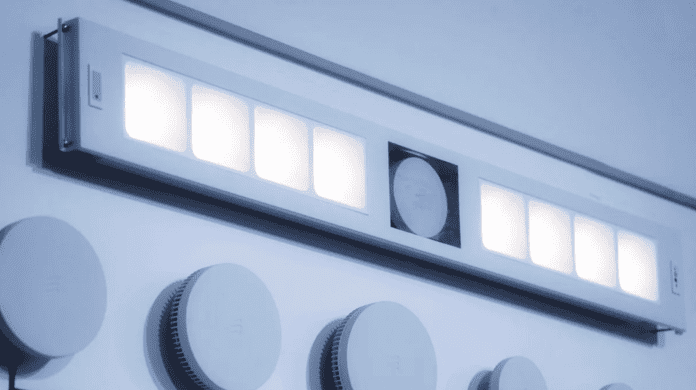With the roll-out of 5G networks, the shrinkage of radio cells, and challenge to negotiate cell sites, lighting infrastructure presents a valuable opportunity for city operators and building owners to get smart.
Netherlands-based Signify has been leading the development of smart poles to host a range of hardware modules, including cellular radios, IoT sensors, and edge compute functions.
It has a deal with Ericsson to embed the Swedish vendor’s Radio Dot LTE/5G small cell into indoor lighting fixtures. The solution will be with Ericsson’s portfolio for private LTE and 5G networking to industrial enterprises.
The new BrightSites product, which supports LTE-based LTE-M and NB-IoT, as well as LTE and 5G; IoT sensors can be plugged in, as required. Ericsson says the pair are targeting new-build constructions and large-scale renovations.
Jessey Huang, head of indoor radio at Ericsson, comments: “This is often when building owners and property managers are looking for integrated solutions that can deliver two or more services – in this case both lighting and cellular connectivity.”
Most installations will be with mobile operators, serving enterprises, although some business will come with Industry 4.0 deployments using private networks.
“Private networks are certainly an option but so are mobile operator-led networks where there is a need for robust enterprise connectivity. We are starting to see a pick-up of private networks with the introduction of CBRS and advancement of Industry 4.0 in certain markets, but traditionally, indoor networks for enterprises are run and owned by the mobile operator,” says Huang.
She adds: “If the network is operating on a licensed spectrum, then yes, it will always require an operator. In cases of private networks, with either unlicensed or private spectrum, lease of spectrum from an operator is not needed. In terms of deployments, we work with both the customer and often systems integrators or our own services arm to deliver the full network.”
Indoor 5G will complement other indoor technologies, according to Ericsson. Huang suggests use cases for indoor-5G, sprung from the lighting network, will focus on mobile broadband as a matter of course, but develop to also cover asset tracking, factory automation, and augmented and virtual reality (AR/VR).
“Indoors, users will look for secure, reliable and robust connections that 5G can provide to support applications like video streaming and AR/VR. In factories and industrial buildings, 5G will drive IoT use cases for material transport, asset tracking, and factory automation. We really believe the sky is the limit with indoor 5G.”
Signify has the outdoor space covered, too. Most notably, it has introduced a Smart Fusion Pole last year, developed with American Tower, to provide ready-infrastructure for wireless broadband, as well as energy efficient lighting and controls, in a street light pole that blends into the urban landscape.
Its plug-and-play design provides access for sundry LTE and 5G radios, along with a full range of low-power wide-area (LPWA) technologies. Antennas, concealed within the pole, support services from multiple mobile operators on a single pole.
Signify and American Tower have installed LED lighting and mobile connectivity on 200 light poles in the City of Huntington Beach, in southern California. The poles are situated along the Pacific Highway and downtown areas, close to restaurants and retail establishments.

